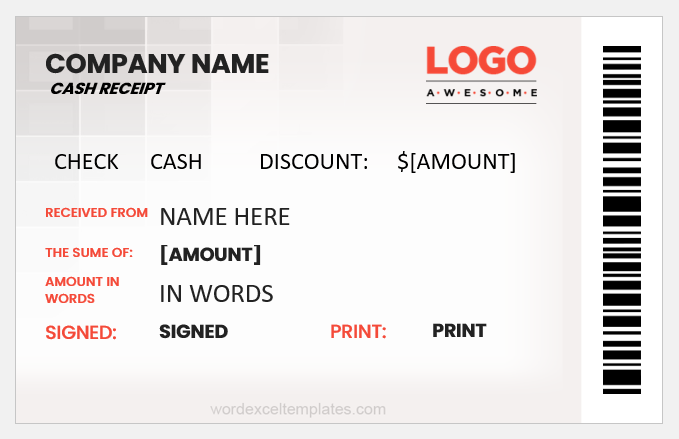A cash receipt is a printed document of the cash received during a sales transaction. Usually, a copy is made which is kept by the seller and the original receipt is given to the customer.
The Sustainability of a business is measured by the management of the company’s costs, sales, and cash receipts, which help to monitor them accurately. Cash receipts represent the sales and payments made by the customers. The company selling the products may receive cash, including credit cards, checks, wire transfers, money orders, etc.
An accountant of the company documents all the cash receipts in a cash receipt journal. This journal keeps track of all the cash coming into the business. An accountant credits the sales accounts and debits the cash accounts. For entering the data into the journal, the cash receipts are usually divided into three categories:
- Received from Cash sales
- Received from Credit customers
- Received from Other sources
The daily cash balance sheet tracks all cash received and paid out. Cash receipts are recorded and deposited on the same day. Any shortage or overage of cash is carefully investigated and corrected.
Here are five commonly used types of cash receipts…
#1
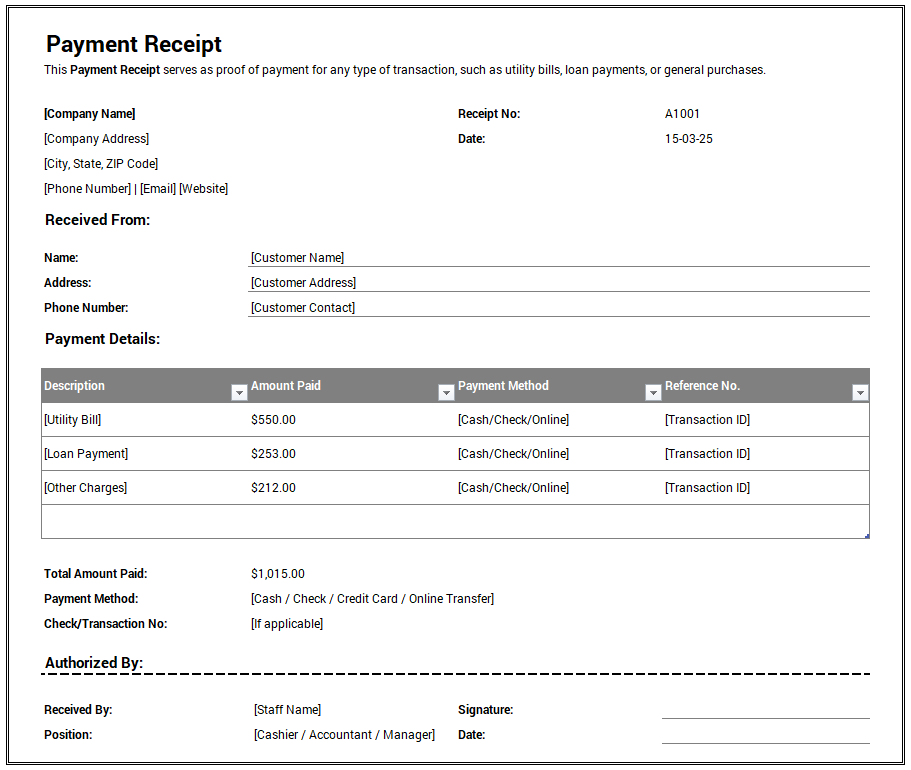
Payment Receipt: A general receipt confirms any payment, such as utility bills or loan payments.
MS Excel Booksheet for [.xlsx]
#2
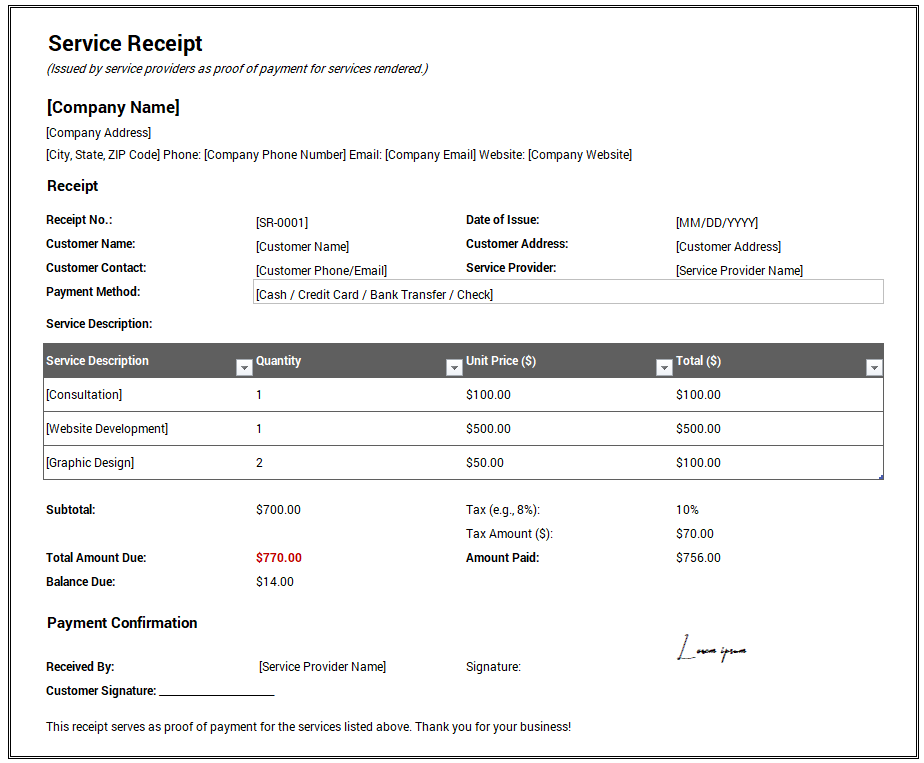
Service Receipt: Issued by service providers (e.g., contractors, consultants) as proof of payment for services rendered.
MS Excel Booksheet for [.xlsx]
#3
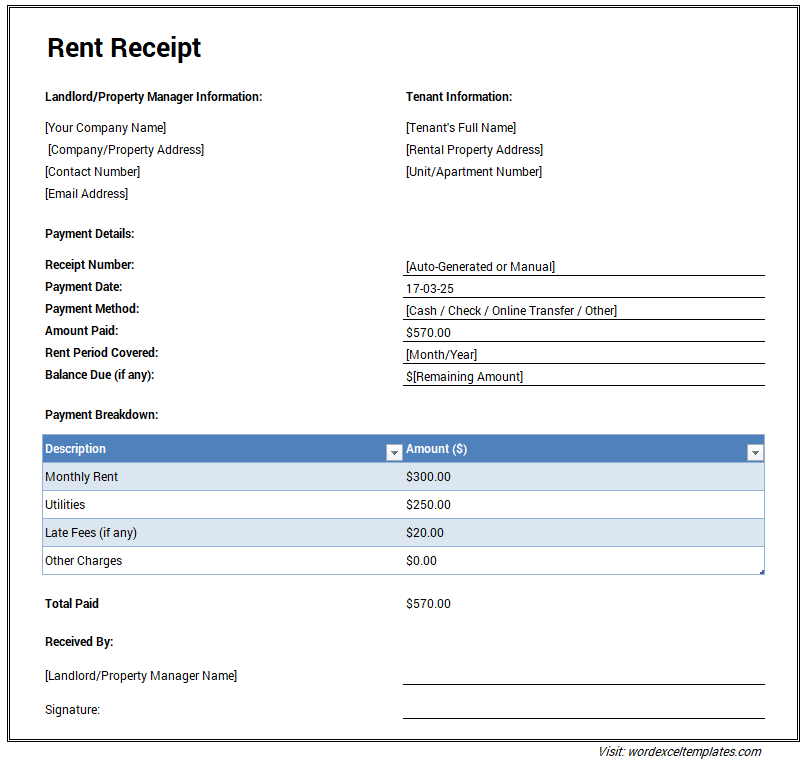
Rent Receipt – Provided by landlords or property managers when tenants make rent payments.
MS Excel Worksheet for [.xlsx]
#4
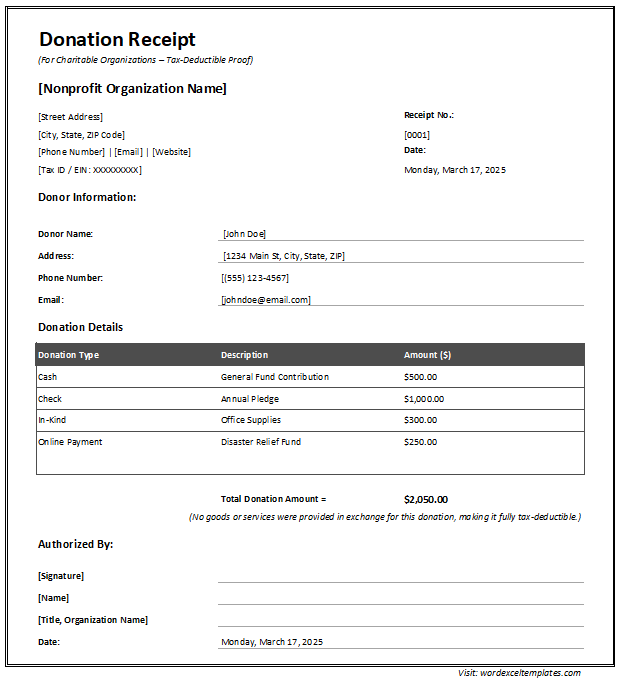
Donation Receipt – Given by charitable organizations to donors for tax-deduction purposes.
MS Excel Worksheet for [.xlsx]
Types of Cash Receipts
The type of cash receipts usually depends on the nature of the business. Generally, they can be divided into three types:
Online Payment Cash Receipts: These are electronically generated receipts. iPayment is a payment service provider for online merchants. It is a web-based application that allows deposits to be submitted electronically and does not require customer information.
Cash-registered Cash Receipts: The cash register generates a printed voucher for the purchase. Cash receipts can be connected to networks or stand-alone.
Manual Cash Receipt: A manual cash receipt is prepared by hand and requires a lot of care. Usually, these are triplicated with a white, pink, and blue copy. The white copy is for customers, the pink copy is for FMO (Financial Management Operations), and the blue copy is kept in the receipt book by the department for record keeping.
Uses of Cash Receipts
Cash receipts are very essential and can be useful in many ways:
- They are Important for accounting records of sales
- They provide a proof of ownership
- They can be used for the return or exchange of items bought
- Warranty can be claimed by showing the cash receipts
- Audit issues can be avoided by keeping a record of cash receipts
- Cash receipts help you manage your taxes correctly. These can be retained if any claim is made for a tax deduction.
- They place constraints on the overspending of the company’s capital, which improves profitability.
- Cash receipts provide accurate reporting on the use of the company’s cash.
Who uses Cash Receipts?
All types of businesses primarily use cash receipts. Accountants use them within the company to keep and maintain its sales records. The information on cash collection and payments is used to create company budgets. Some companies use this procedure to generate income statements and other future reference reports. From a company’s point of view, when a sales transaction happens, it is a collection of money that shows an increase in a company’s balance sheet.
Cash Receipt Function
The cash receiving function of an organization is centralized. When a branch office receives a cash receipt, the branch officers make the cash deposits, which are transferred to the central office through the banking system. As soon as a cash receipt is received, the following steps take place:
Receive payment from customers
- Receive payment from customers
- Identify the invoice with which
each receipt is linked - Deposit payments to a bank account
- Balance deposit against actual
bank activity - Post receipts
- Monitor and settle cash receipts
When cash is collected over the counter or in the field, a sequenced pre-numbered receipt is issued through cash registers or automated systems. The receipt also mentions the mode of payment, such as cash, bank draft, check, etc. Once the cash receipt log is with the accounting department, it should be kept with the deposit as a source document.
Templates
A cash receipt consists of the following information:
- Vendor Details
- Date of the Transaction
- A unique Identification number assigned to the document
- Customer Name
- The cash Amount received
- Method of payment
- Vendor Signature
- Motor Pool Reservation Log
- Logistics Dispatch Sheet Template
- Daily Entry Summary Sheet
- Entry Badge Issuance Record Sheet
- Guest Entry Register Template
- Shopping & Souvenir List Template
- Maintenance Crew Entry Sheet
- Event Visitor Register
- Delivery Entry Register Template
- Late Arrival Log
- Pre-Trip to do List Template
- Staff Entry Register Template
- Monthly Attendance Tracker & Report
- Service Offering Description Form
- Inventory Planning Sheet Template
